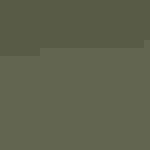
Welcome to
Audubon Connecticut
We protect birds and the places they need, today and tomorrow, in Connecticut and throughout the hemisphere.
Centers and Sanctuaries in Connecticut
More than 450 migratory, year-round, and wintering bird species call our state home.

Birds like the Piping Plover, American Kestrel, and Purple Martin are at the heart of our work. Each project we advance has a specific bird (or birds) in mind, and our goal is always to halt - and reverse - their declines.
Get Audubon in Your Inbox
Let us send you the latest in bird and conservation news.








